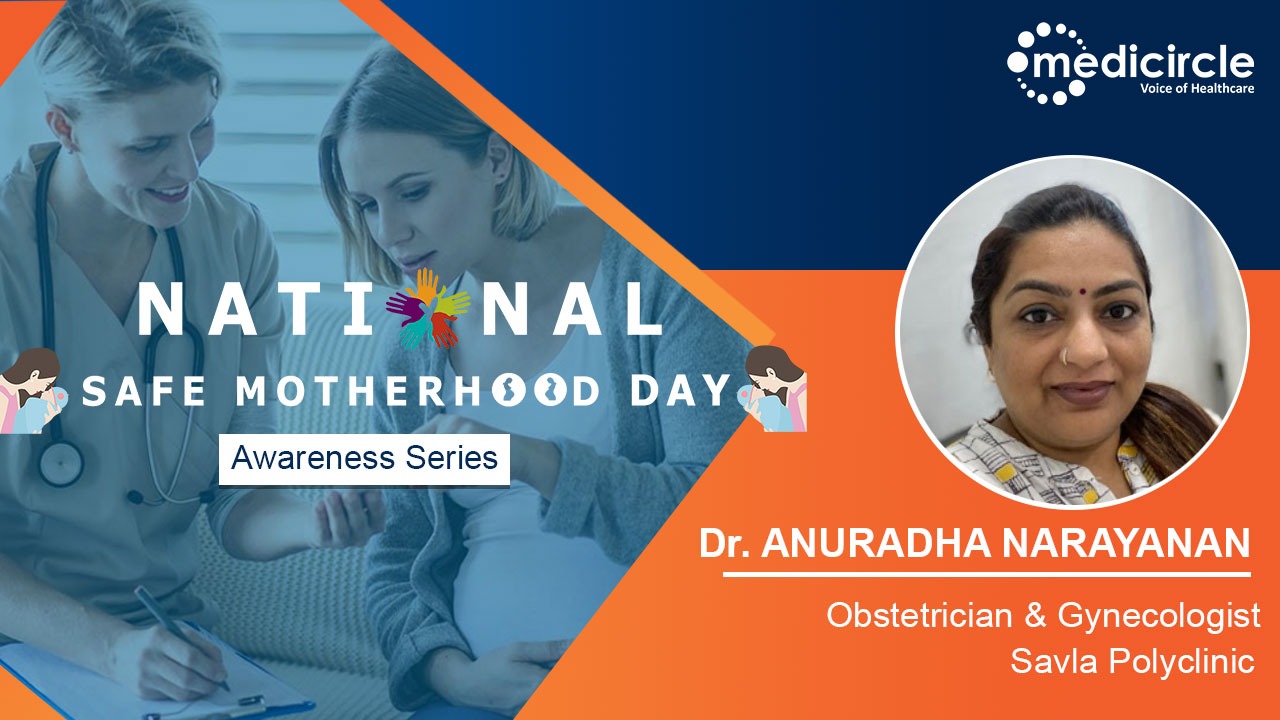The government of India declared the National Safe Motherhood Say in the year 2003. It became the first country to do so. It is an initiative of the White Ribbon Alliance to raise awareness about adequate access to care during pregnancy, childbirth, and postpartum face. White Ribbon Alliance is a coalition of global partners working together to mobilize grassroots efforts to generate worldwide attention and make safe motherhood a priority for governments and international organizations.
National Safe Motherhood Day is observed each year in India on the birth anniversary of Kasturba Gandhi, wife of the father of the nation, Mohan Das Gandhi. India is one of the higher-risk nations as far as childbirth is concerned. 15% of the world's maternal deaths take place in India due to improper care during pregnancy. 44,000 women die every year during childbirth. We, at Medicircle, aim to raise awareness about safe motherhood.
For over a decade, board-certified obstetrician-gynecologist, Dr. Anuradha Narayanan has been helping women take control of their reproductive health and fertility. She graduated and post-graduated from the prestigious Madras Medical College and presented many papers at various conferences. She has received the 2011 Mr.D’ Silva Memorial Award and H Desa Silver Jubilee awards in 2012.
Currently, she's working as a consultant and chamber attached to Apollo Spectra hospital and Salva Diagnostic Center. She is a member of MOGS, FOGSI & AMC
Achieving safe motherhood is important in India
Dr. Anuradha Narayanan says, “The main aim of safe motherhood is to decrease the illnesses and mortality among women in India. Here are important ways to achieve safe motherhood.
Family planning: There is a huge unmet need for contraception in India. Many women are unaware about contraception. There are a lot of myths and religious inhibitions about accepting contraception. So, instead of imposing on them, we should inculcate that contraception is the right choice and give them a scientific approach. They should be allowed to choose their method of contraception which is the right choice for them.
Safe motherhood: It is important to identify the risk factors in early unwanted pregnancy to give them the safe method of abortion. If it's a high-risk pregnancy, then we can counsel them accordingly.
Antenatal care: We should advise women to go for better antenatal care for regular check-ups
Maternal health education: This is not only important for women but for the whole community. In India, it is not only the women, or couple who take the decision for pregnancy but the entire family is involved in it.
Delivery by trained person: This should be encouraged by the institutional deliveries.
It is important for pregnant females and mothers along with their newborn babies to sit home during this coronavirus pandemic. Do not step out unnecessarily with your baby.”
The reason behind the Maternal Mortality Rate (MMR)
Dr.Narayanan states, “India is the second-most populous country in the world. We share the large burden of the maternal mortality rate. There are many factors that affect the Maternal Mortality Rates (MMR).
- Infrastructure
- Socio-economic background
- The position of women
The Maternal Mortality Rate (MMR) causes are due to two main important factors
Direct Causes: These are directly connected to the Maternal Mortality Rate (MMR). These are:
- Hemorrhage: Bleeding during pregnancy
- Anemia: This is a preventable cause
- Sepsis or infection
Indirect Causes: These are indirectly connected to the Maternal Mortality Rate (MMR), not directly connected to pregnancies but due to systemic disorders such as cardiac diseases or any women’s health diseases.
Ensure safe motherhood with this advice given by our expert
Identify risk factors: To ensure safe motherhood, it is important to identify the early risk factors during pregnancy and prevent it with better antenatal care.
Cure: Reach out early which will help in early diagnosis and treatment to achieve the best possible cure.
Early diagnosis: This will help achieve a decrease in Maternal Mortality Rate (MMR) to correct the problem of hemorrhage or anemia during early pregnancy.
Antenatal screening: Antenatal screening is a must during the 3 rd and the 5 th month of pregnancy.This is important to detect any complications during pregnancy.
Regular follow-up: It is important to go for regular health checkups during pregnancy and delivery as the doctor advises you. It is important to follow the doctor’s advice for regular check-ups and medications in cases of anemia and high BP which can be prevented.
Cure of the disease: This can bring down the Maternal Mortality Rate (MMR) by 70 %
Warning signals that call for attention during the three trimesters of pregnancy
Dr.Narayanan says,” Pregnancy is divided into 3 trimesters. Each trimester has 13 weeks. Every trimester has its own warning signs.
First trimester:
- Pain
- Bleeding or spotting during the fifth week of pregnancy
- Giddiness
- Palpitations
- Discharge: reddish color or brownish color
The second and third trimester of pregnancy
- High BP
- Blurring of vision
- Nausea
- Vomiting
- Lot of epigastric pain
- Decrease in urine
- Headaches that do not subside with normal medication
- Disorientation
- Loss of consciousness
- Decrease in fetal movements
- Labour contractions and pain
- Any bleeding during pregnancy is not normal
This requires immediate attention and you must visit the doctor. So, these are few signs that you cannot ignore it and you must make sure to meet your doctor or acquire an emergency facility.” says Dr.Narayanan.
(Edited by Dr.Rati Parwani)

 Dr. Anuradha Narayanan, board-certified obstetrician-gynecologist explains to us the need to achieve safe motherhood to decrease the Maternal Mortality Rate (MMR) in India. She also gives importance to antenatal care during pregnancy which is very important for every woman.
Dr. Anuradha Narayanan, board-certified obstetrician-gynecologist explains to us the need to achieve safe motherhood to decrease the Maternal Mortality Rate (MMR) in India. She also gives importance to antenatal care during pregnancy which is very important for every woman.










.jpeg)

















.jpg)


